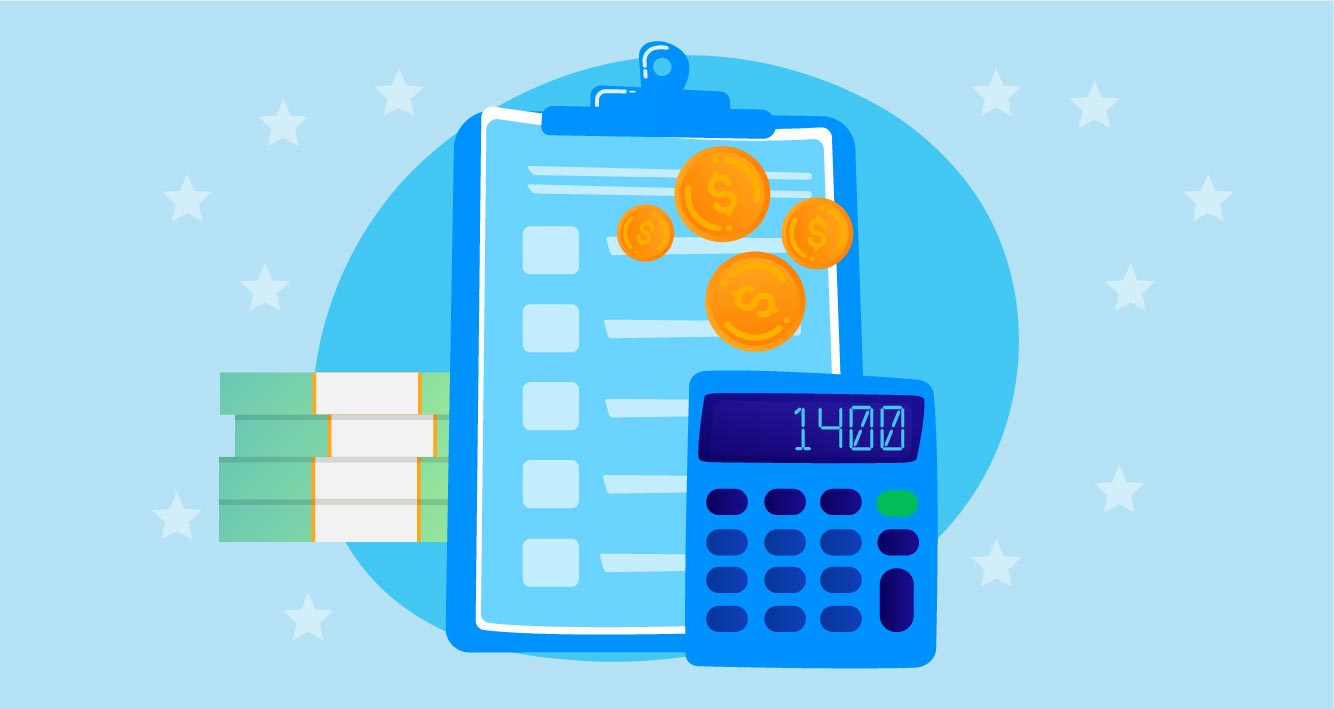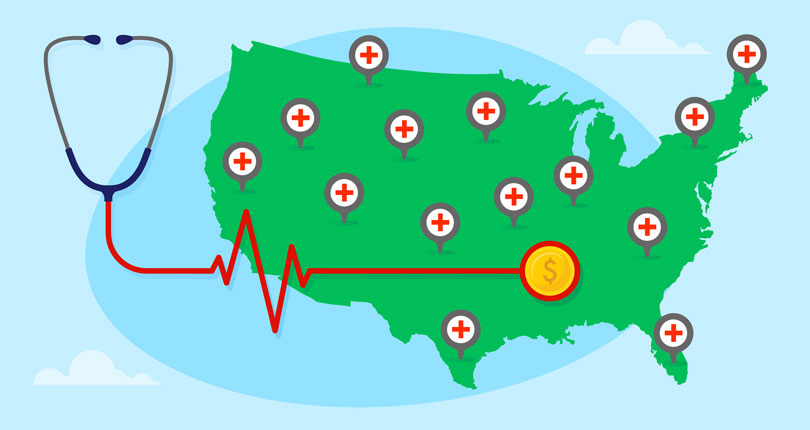What is in Biden’s $1.9 trillion ‘American Rescue Plan’ Stimulus Package?

47% of Americans are in “urgent” need of support to get through the economic impact of the COVID-19 pandemic. That’s according to our latest survey looking at how urgently people need support from President Biden’s $1.9 trillion COVID-19 stimulus package.
Titled the ‘American Rescue Plan’, President Biden’s plan aims to provide support for Americans via a range of provisions, but where is the money going and how does the general public intend to use the support given to them; namely the $1,400 stimulus checks?
Key Statistics Of Where The Stimulus Bill Will Be Spent
- $403 billion of stimulus checks will be given to eligible Americans
- The continuation of the $300 per week unemployment support and other measures will cost $205 billion
- More than $176 billion will be invested in schools, colleges, and online learning
- COVID-19 vaccination and testing programs will receive nearly $66 billion of federal support
- Restaurants and bars are set to receive $28.6 billion of aid, with Airlines and the aviation industry being handed slightly less at $25.5 billion
- 47% of Americans surveyed said they need “urgent” support within the next month
- The top 3 areas people need stimulus support for are; paying critical debts (28.8%), mortgage and rent payments (27.1%), and buying food (25.2%)
Visual Chart Of The Third Stimulus Package Spending Plans

Since the start of the COVID-19 pandemic, almost $3 trillion of support and stimulus packages have been approved by the federal government. However, with the nation still suffering from the impact of the virus, President Joe Biden and his administration pledged to do more.
Approved by Congress on March 10th, 2021, and signed by President Biden on March 11th, 2021, the $1.9 trillion stimulus package - titled the ‘American Rescue Plan’ - provides support across 6 key areas:
- Individual Support
- Education
- State & Local Government
- Public Health & Care
- Business & Infrastructure
- Community Support
| Spending Package Category | Estimated Package Costs ($bn) | % Of Overall Costed Plan |
|---|---|---|
| Individual Support | $886.8 | 48.57% |
| Education | $176.8 | 9.69% |
| State & Local Government | $362.1 | 19.83% |
| Public Health & Care | $146.8 | 8.04% |
| Business & Infrastructure | $185.3 | 10.15% |
| Community Support | $68.1 | 3.73% |
| Other Support Areas | $14.2 | 0.78% |
*Data for the American Rescue Plan breakdown was sourced from the CBO - https://www.cbo.gov/publication/57056 - dated 03/11/2021. Total outlay figures reach a value of $1.840 trillion, with a $14.4 variance on preserving health care that provides a total package outlay of $1.825 trillion. Percentages used in the chart relate to the $1.825 trillion outlay figure.
Where Is the Government Spending The Latest Stimulus Package?
Using the data from the Congressional Budget Office (CBO), we have split the areas of the ‘American Rescue Plan’ stimulus bill into 7 key areas.
Below is an overview of where the stimulus bill is expected to be spent and used:
Investment And Support For Individuals
Estimated Support For Individuals: $886.8 Billion
Percentage Of Stimulus Bill:48.57%
Nearly half of the American Rescue Plan is set to be spent supporting individuals; by the way of stimulus checks, unemployment support, tax credits, and housing aid.
The majority of this area of the bill will go towards the $1,400 stimulus checks, for those eligible, at a total estimated cost of $403.7 billion. Aimed at helping those in need afford their housing payments, debts, and other living costs, the checks are “urgently” needed by 47% of respondents to our recent survey.
Under the investment and support for individuals section of the plan, tax credits will be expanded and increased, at a cost of $144.9 billion. While unemployment checks (remaining at $300 per week) will be supported and extended until September. The total bill for the unemployment support, across the range of activities, comes to a total of $205.8 billion.
A further $46.8 billion will be provided to help those in housing distress. With the key fund being; $21.6 billion in rental assistance, nearly $10 billion in homeowner assistance, and $5 billion in support and care for the homeless.
Investments And Support For Education
Estimated Support For Education: $176.8 Billion
Percentage Of Stimulus Bill:9.69%
Approximately $176.8 billion is projected to be spent supporting the reopening and funding of education centers, such as schools, colleges, and remote learning; representing 9.61% of the total bill.
Public and private K-12 schools will receive $125.5 billion in funding, with higher education (colleges, etc) being handed $39.6 billion in support. These investments are designed to help support remote learning (where possible), decrease class sizes in a bid to help social distancing, and other administrative changes to ensure schools can re-open safely.
In addition to the K-12 and higher education funds, a further $7.2 billion has been made available to equip and help aid remote and distance learning.
Investments And Support For State And Local Governments
Estimated Support For State And Local Governments: $362.1 Billion
Percentage Of Stimulus Bill:19.83%
Many states and local governments have seen their ability to support residents diminish as the pandemic goes on. To help provide more localized aid, the American Rescue Plan provides $362.1 billion in support and investment for state and local governments.
This figure is designed to help the more local governments provide funds where they are needed, helping in the COVID response, ensuring public services are available, and local projects can continue.
Investments And Support For Public Health And Care
Estimated Support For Public Health And Care: $146.8 Billion
Percentage Of Stimulus Bill:8.04%
Almost 8% of the American Rescue Plan stimulus package will go towards public health and care initiatives. Of which, nearly $66 billion will go towards testing ($50.8 billion) and the vaccination program ($15.1 billion), with a further $27.9 billion being spent on Medicaid and other insurance support.
In addition to the COVID and insurance response, $16.7 billion will be spent increasing the health care workforce and on improved facilities, close to $10 billion will also be spent on additional PPE and other emergency medical supplies.
Investment And Support For Businesses And Infrastructure
Estimated Support For Businesses: $185.3 Billion
Percentage Of Stimulus Bill:10.15%
Business across the US has been hit hard by the economic fallout of the pandemic, with the hospitality and tourism industries hit especially hard. To aid businesses, President Biden’s American Rescue plan provided over $185 billion in support to businesses and agencies.
Under the third stimulus bill, restaurants and bars (hospitality) will receive $28.6 billion in aid, to cover lost revenue and help make their premises “COVID secure”. In addition, the aviation industry (airlines, airports, and manufacturers) will be provided with $25.5 billion.
As for small businesses, $10 billion has been earmarked as “state” provided small business support, with $15 billion put aside for EIDLs (Economic Injury Disaster Loans), and $7.3 billion provided as paycheck support.
Finally, within the business and infrastructure sections of the bill, Public Transport agencies will be provided with $30.5 billion, while FEMA will be given $53.7 billion to provide aid where it is needed most.
Investments And Support For Communities
Estimated Support For Communities: $68.1 Billion
Percentage Of Stimulus Bill:3.73%
To help support communities and those at potential risk, the latest stimulus package provides more than $68 billion in community support and care packages.
The largest part of the “community” payments go towards childcare grants, stabilization, and support for abuse survivors and headstart programs, coming to a total cost of $41.8 billion. A further $6.3 billion will go towards childcare for key workers during the pandemic, helping them afford to work and look after their children as they work.
In addition to the childcare provisions, $17.1 billion has been assigned to support veterans. Predominantly, providing medical care ($14.5 billion), and co-payment aid ($1 billion) for veterans.
Other Investments And Support
Estimated Support For Other Areas: $14.2 Billion
Percentage Of Stimulus Bill:0.78%
A further $14.2 billion had been put aside for international affairs ($10 billion), environment & public works ($3.2 billion), and science & technology ($1.0 billion). These investments and supports are aimed at helping other nations, ensuring the environmental projects can go ahead and deal with some of the pollution and waste that is expected as a result of countering COVID-19 (medical waste, etc).
Surveying The Need For The Stimulus Package
With many existing provisions coming to end on March 12th, the American Rescue Plan has been pushed through Congress and the Senate at a record pace. To understand the need for the new stimulus bill, we surveyed 1,033 Americans on their financial security, their need for stimulus support, and where they intend to spend their stimulus check (should they be eligible).
Urgency Of The Stimulus Bill
Of the 1,033 Americans surveyed, 47% said they had an urgent need for stimulus support within the next month, with 24.4% indicating they would need support in less than two (2) weeks, and 22.4% saying they would be fine for a month but expect that within 3 months would need some form of support.
At the time of running the survey, the timeline for the bill was uncertain. To understand just how perilous people’s finances are, we asked respondents what areas a delay in stimulus money impacts them most.
The five (5) areas people were most worried about paying if there was a delay were:
- Paying critical debts on time - 28.8%
- Keeping up with mortgage and rent payments - 27.1%
- Keeping food on the table - 25.2%
- Paying for utilities - 24.2%
- Paying for medication, treatment, and/or health insurance - 13.8%
With these concerns in mind, we then wanted to understand just how dire some people’s finances have become.
How easily can Americans cover unexpected bills?
Using a similar method to that of the Federal Reserve, we asked our respondents how easily they would be able to pay an unexpected $400 and $1,000 cost. Of the over 1,030 respondents:
- 29% said they’d struggle to pay an unexpected $400 bill, rising to 46.6% in relation to a $1,000 expense
- 15.6% of respondents wouldn’t be able to cover a $400 bill at all, with a further 13.5% needing to sell assets or borrow the money
- Over a quarter (27.9%) of respondents would be unable to afford a $1,000 bill, with a further 18.7% saying they could but only if they sold assets or borrowed the money
- The inability to pay a $1,000 bill is highest in under 35s, where 54.4% would be unable to pay such a bill or would need to sell assets or borrow money to cover it
View our recent Brink Of Homelessness report to understand just how close the average American is from homelessness.
Where Will People Spend The Third Stimulus Check
For those eligible to receive some of the $403 billion assigned to checks in the American Rescue Plan, we wanted to see just how people would spend their $1,400 stimulus check, in a similar way to how we investigated how people used the first stimulus checks.
Our data found that 32.6% would put the money towards paying off debts, with 28.3% using the money to pay for their utilities, and 28.1% to keep food on the table.
19.3% of respondents said they intended to put their money towards paying their rent, with 12.9% saying they’d use the money to help keep up with mortgage payments. In total 32.1% of respondents said they’d put their money into paying for their home.
The top ten (10) areas people intend to spend their stimulus check:
- Pay off debt(s) - 32.6%
- Housing - 32.1%
- Pay utility bills - 28.3%
- Buy food - 28.1%
- Invest in stocks and shares - 16.7%
- Buy personal care items (toiletries etc) - 16.1%
- Pay for health insurance and/or medication and treatment - 11.6%
- Buy clothes - 11.2%
- Invest in cryptocurrency - 7.9%
- Put towards a deposit for a new home - 7.3%
*Housing answers combined. 12.9% would pay their mortgage, 19.3% would pay their rent.
Data Sources & Methodology:
Data Source:
https://www.cbo.gov/publication/57056
Methodology:
Data for the American Rescue Plan breakdown was sourced from the CBO - https://www.cbo.gov/publication/57056 - dated 03/11/2021. Total outlay figures reach a value of $1.840 trillion, with a $14.4 variance on preserving health care that provides a total package outlay of $1.825 trillion. Percentages used in the chart relate to the $1.825 trillion outlay figure.
A sample of 1,033 Americans were surveyed between March 4th-12th, 2021 using Amazon’s Mechanical Turk survey platform. Questions were asked about their need for stimulus support, their financial situation, and where they plan to spend their stimulus check, should they be eligible.
The breakdown of the respondents sampled is as follows:
Age Ranges
- 18-24 - 59
- 25-34 - 352
- 35-44 - 282
- 45-54 - 161
- 55-64 - 119
- 65 and over - 56
- Prefer not to say - 4
Gender Identified
- Female - 538
- Male - 482
- Prefer not to say - 9
- Other - 4
Political Party They Most Identify With
- Republican - 298
- Democrat - 476
- Independent - 213
- Something else - 24
- Prefer not to say - 22
 Back to Data & Guides
Back to Data & Guides




